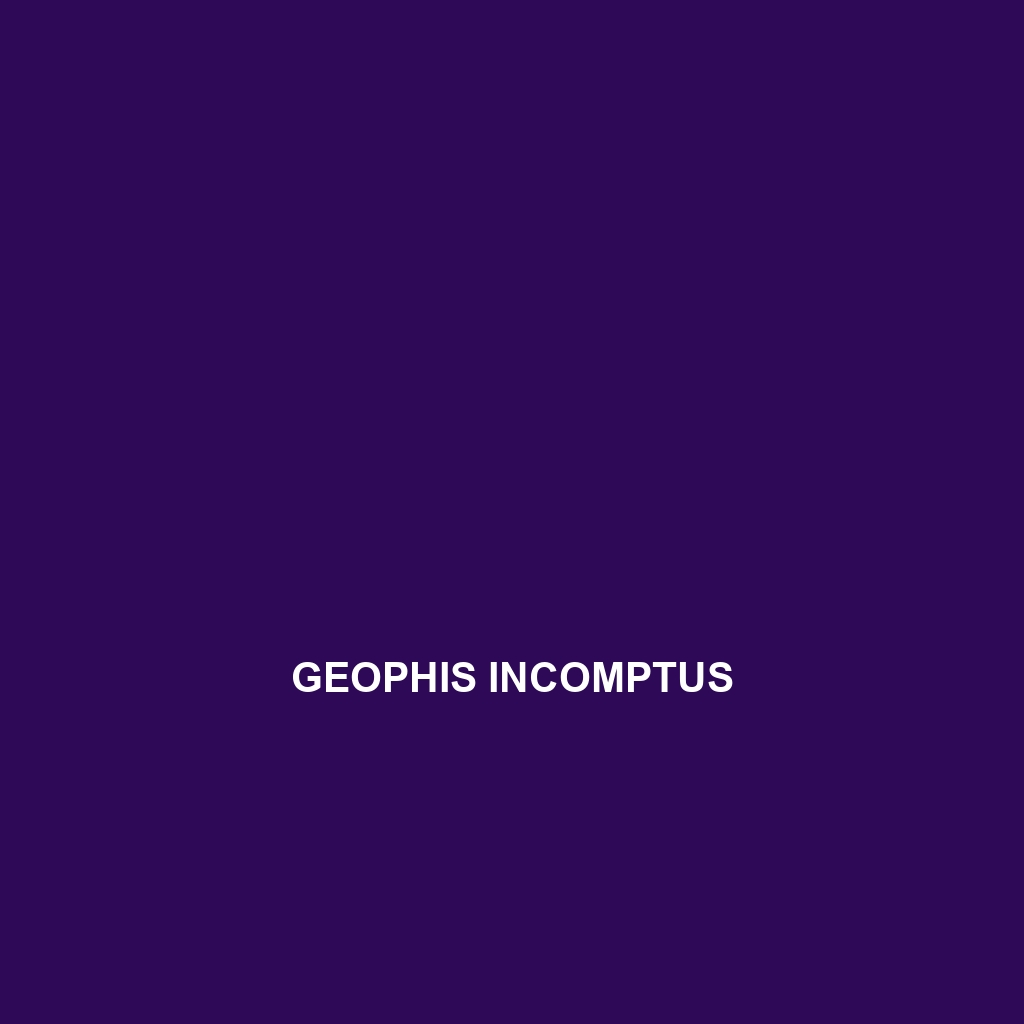Common Name
Geophis incomptus
Scientific Name
Geophis incomptus
Habitat
Geophis incomptus is primarily found in the Central American region, particularly in the countries of Costa Rica and Panama. This species thrives in diverse habitats, including tropical rainforests, humid montane forests, and adjacent savannas. The climate in these regions is typically warm and tropical, characterized by high humidity and significant rainfall throughout the year. These conditions create a rich environment of vegetation that is critical for their survival. Due to their preference for moist, shady areas, Geophis incomptus can often be found burrowing in the forest floor, where the dense leaf litter provides both camouflage and protection from predators.
Physical Characteristics
Geophis incomptus exhibits several distinctive physical traits that set it apart from other species in the Geophis genus. Adults typically reach an average length of 30 to 40 centimeters (12 to 16 inches). Their bodies are elongated and slender, providing them with the agility needed for burrowing. The coloration of Geophis incomptus is particularly striking, displaying a dorsal pattern of rich brown or dark gray with lighter, contrasting stripes that run longitudinally along its body. The belly is usually pale or cream-colored. Unique to this species are its smooth scales and a pointed snout, which assist in digging through the soil and leaf litter.
Behavior
Behaviorally, Geophis incomptus is largely nocturnal, venturing out primarily under the cover of darkness to hunt and explore its territory. This species exhibits solitary behavior, rarely seen in groups, and is known for its excellent burrowing abilities. During the mating season, males engage in elaborate courtship displays, which may include body movements and scent marking to attract females. Interestingly, Geophis incomptus has been observed engaging in defensive behaviors, such as coiling and striking when threatened, though it tends to be non-aggressive towards humans.
Diet
Geophis incomptus is primarily an insectivore, preying on various invertebrates. Its diet consists mainly of soft-bodied insects, such as earthworms, slugs, and various larvae. The species employs a unique feeding strategy by using its keen sense of smell to detect prey hidden within the soil. This ability allows Geophis incomptus to thrive even in areas with minimal food availability. Its specialized feeding adaptations include a forked tongue that helps in the detection of prey.
Reproduction
The reproductive cycle of Geophis incomptus typically occurs during the rainy season, from late spring to early summer. After a gestation period of approximately 60 to 90 days, females give birth to live young, with litter sizes ranging from 3 to 10 offspring. The young are born fully developed and are capable of independent survival shortly after birth. Parental care is minimal, with females leaving the offspring to fend for themselves shortly after they are born. The reproductive strategy of Geophis incomptus ensures that the young can quickly adapt to the rich and competitive ecological niches they will inhabit.
Conservation Status
The conservation status of Geophis incomptus is currently classified as Least Concern according to the International Union for Conservation of Nature (IUCN). However, habitat destruction due to deforestation, agricultural expansion, and urban development poses significant threats to this species. Efforts to conserve its natural habitats and promote biodiversity in regions where Geophis incomptus resides are crucial for its continued survival. Local conservation initiatives focus on reforestation and the establishment of protected areas that safeguard these vital ecosystems.
Interesting Facts
One notable fact about Geophis incomptus is its remarkable adaptability to different soil types. This species can thrive in both sandy and clay-rich soils, showcasing its diverse ecological versatility. Additionally, Geophis incomptus has been observed to utilize antifungal secretions on its skin that protect it from pathogens, an adaptation that is particularly beneficial in humid rainforest ecosystems. Moreover, this species plays a critical role in its environment by aiding in soil aeration and nutrient cycling through its burrowing activities.
Role in Ecosystem
Geophis incomptus plays a significant ecological role in its habitat, acting both as a predator of various invertebrates and as prey for larger predators, thus contributing to the balance of the food web. Its burrowing activities promote soil aeration and health, which impacts plant growth and seed dispersal in the surrounding environment. Furthermore, this species is considered a bioindicator, with its presence indicating the overall health of the ecosystem. Maintaining healthy populations of Geophis incomptus is essential for preserving the intricate relationships within its habitat and ensuring ecosystem stability.
